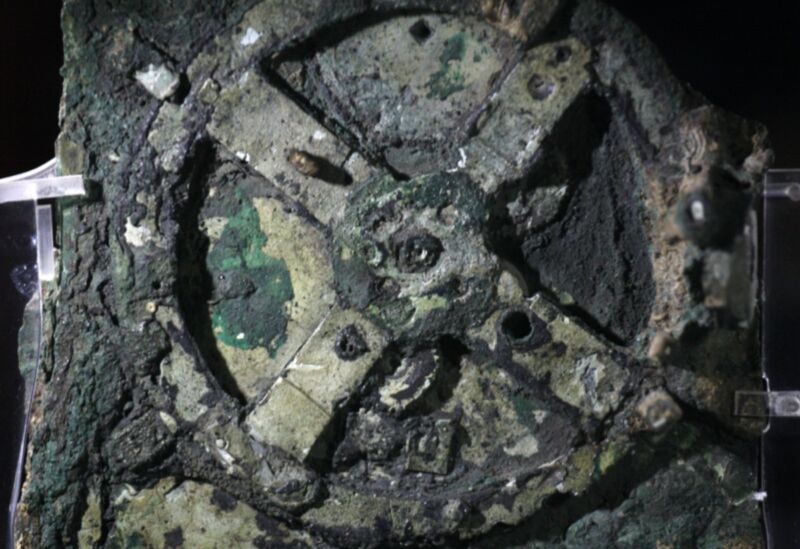New Antikythera mechanism analysis challenges century-old assumption

Enlarge / Fragment of the Antikythera mechanism, circa 205 BC, housed in the collection of National Archaeological Museum, Athens. (credit: Fine Art Images/Heritage Images/Getty Image)
The inspiration for the titular device in last year’s blockbuster, Indiana Jones and the Dial Destiny, was an actual archaeological artifact: the Antikythera mechanism, a 2,200-year-old bronze mechanical computer. It doesn’t have any mystical time-traveling powers, but the device has been the subject of fierce scientific scrutiny for many decades and is believed to have been used to predict eclipses and calculate the positions of the planets.
A new paper published in The Horological Journal found evidence that the mechanism’s calendar ring was designed to track the lunar calendar based on statistical techniques drawn from physics, particularly the study of gravitational waves. This contradicts a century-long assumption among scholars of the mechanism that the calendar ring had 365 holes, thus tracking with a solar calendar, but is in keeping with the conclusions of a 2020 analysis.
“It’s a neat symmetry that we’ve adapted techniques we use to study the universe today to understand more about a mechanism that helped people keep track of the heavens nearly two millennia ago,” said co-author Graham Woan, an astrophysicist at the University of Glasgow. “We hope that our findings about the Antikythera mechanism, although less supernaturally spectacular than those made by Indiana Jones, will help deepen our understanding of how this remarkable device was made and used by the Greeks.”




